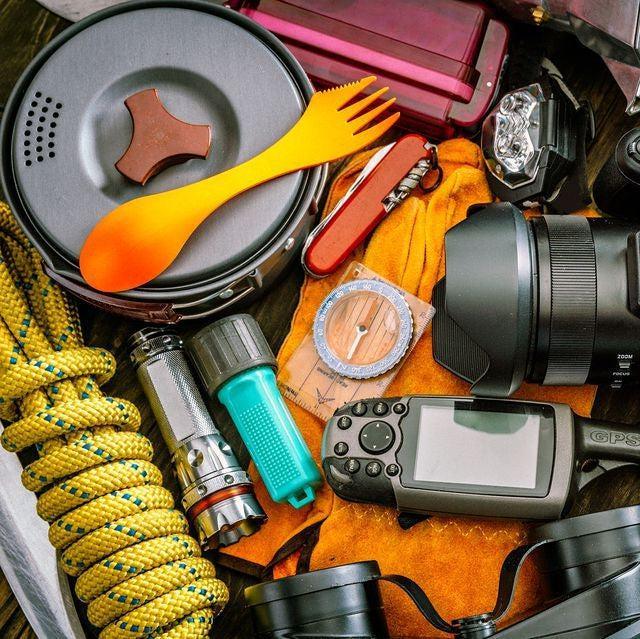
10 Fail Proof Foods To Grow For Beginning Homesteaders
Share
It is springtime, and everyone, prepper or not, is beginning to consider planting and growing a garden. For those that want to successfully feed their family, but are not necessarily the most seasoned gardeners, there are several fruits and vegetables that are easy to maintain and therefore will help ensure your success in producing food crops. These crops can often be canned and stored as well as eaten fresh and enjoyed by you and your family. In addition, the knowledge of being able to grow your own food is invaluable in a post-SHTF scenario. I find that as a Mom myself it is so important to have healthy food for my family, but just because I feed my family vegetables, it doesn’t mean I know how to grow them. However there is no reason for me, or anyone, to feel overwhelmed; these 10 food crops are a cinch to grow and a great place for any new gardener to start.
Early (Cool) Season Vegetables
Early season vegetables can be planted in the cool spring. They don’t usually fair that well in the hot summer.
Radishes –
Radishes are quick growing. They sprout easily and produce a harvestable vegetable in just about 4 weeks. You should plant radishes in a staggered cycle, about every two weeks from early spring to just before summer in order to obtain a continuous harvest. Remember that radish leaves are edible too.
Arugula and other lettuce greens –
Lettuce and arugula do not store well, but they are easy growing plants that can easily be planted and maintained in any scenario, especially if you are growing after a disaster. They grow well in pots, making them a natural for urban homesteaders.
Snow peas/Sugar snap pea-
Snow peas are slightly different from sugar snap peas, but both are easy to grow for beginners. Snow peas are usually flatter, and more tender; they grow on a vine and require support of a cage or trellis, but there are also bush varieties that do not require support. Sugar snap peas are the fatter variety, and they also grow on a vine requiring support. Either kind is a wonderful food packed with goodness that most everyone in the family loves to enjoy. They also freeze well for long term storage.
Green onions –
Green onions are another plant that is extremely easy to grow. They can be harvested and dried for long term storage as well as used fresh. They provide a powerful pack of flavor that would be highly sought after in a survival situation. You can plant seeds, but you can also replant roots that you trim off the green onions you bought at the store. As they grow you can harvest the green stems as needed and then they will grow again.
Late (Warm) Season Vegetables
Warm season vegetables love the sun. There is no point in planting these early, no matter how nice the weather is looking and how excited you are to get planting. You’ll want to plant most of these in late spring, depending on your location, but for most of the US that means late April to early May.
Tomatoes –
Tomatoes are a given for any gardening beginner. They are so versatile, and can be canned, stored and prepared in a number of ways. You are able to can and store sauce, pastes, stewed tomatoes, or enjoy them fresh throughout the late summer season. Tomatoes can also flourish when grown in a big enough pot, making them effective for even small space gardeners.
Tomato plants come in two forms: determinate and indeterminate. Determinate plants stay compact—about three to four feet in height—and all the fruit ripens at roughly the same time. These are a good choice for urban homesteading when space is at a premium. Indeterminate varieties are more vining, and continue to grow and produce fruit until the fall sets in. They can grow quite large, especially with fertilizer, and need a tomato cage for support. If you are planning to start your own from seed, you might want to start them indoors in the early spring, or buy seedlings at the store if available.
Zucchini –
Zucchini, as well as other summer squash, can produce a fair amount of crop for canning or for eating fresh. Most squash does take up a fair amount of garden space, making it less common in urban garden settings, however the patty pan summer squash is slightly more compact for urban and suburban gardeners. Zucchini should be harvested when they are about 6″ long, or in the case of patty pan varieties about 2-3″ across. Squash blossoms are also edible and popular in many cuisines.
Green Beans –
Green beans come in both bush and pole varieties. Once the plant start producing, you’ll want to harvest the green beans every few days for several weeks. Green beans can well for long term storage. There are also yellow and purple varieties that grow easily as well.
Peppers –
Bell peppers are the most popular variety, but they require a slight bit more attention than other pepper plants and can take much longer to reach maturity. Hotter pepper varieties, like jalapeno, and serranoes are easy to grow and produce a plentiful supply of peppers per plant. Like tomatoes, you will want to start your seeds inside to protect them from the early spring cold, or buy seedling plants from your local nursery.
Tomatillos –
Tomatillos grow huge and produce a significant amount of fruit making them ideal for preppers. Tomatillos are also called husk tomatoes, because the fruit grows with a protective husk around the outside making it very resilient and insect resistant. They grow similarly to a tomato plant and can benefit from a little support from a tomato cage. They also have plentiful seeds, meaning once they are introduced to your garden, it’s will easily re-seed and grow anew every year.
Cucumbers –
Cucumbers are one of the post popular pickling vegetables, but they are also wonderful fresh out of the garden. Cucumbers grow on a vine, and while you can let them climb a trellis or cage, they can grow on the ground successfully as well. Cucumbers produce for only a few weeks in a row, so you might consider planning in succession every couple of weeks if you want a long lasting harvest period.
Of course depending on where you live, a certain plant may be easier to grow than another, but for the most part in a standard American climate, you will find these plants will all grow without too much trouble or concern. When you are trying to start your own garden or homestead, it’s often overwhelming trying to decide how to get started, but with these 10 easy crops you can’t go wrong.


